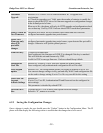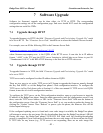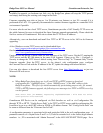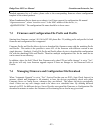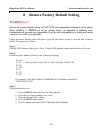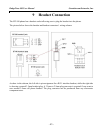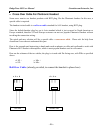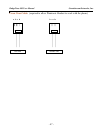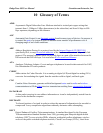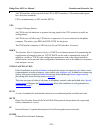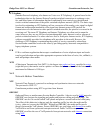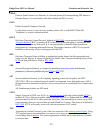
BudgeTone-100 User Manual Grandstream Networks, Inc.
- 51 -
IP Telephony
(Internet Protocol telephony, also known as Voice over IP Telephony) A general term for the
technologies that use the Internet Protocol's packet-switched connections to exchange voice,
fax, and other forms of information that have traditionally been carried over the dedicated
circuit-switched connections of the public switched telephone network (PSTN). The basic steps
involved in originating an IP Telephony call are conversion of the analog voice signal to digital
format and compression/translation of the signal into Internet protocol (IP) packets for
transmission over the Internet or other packet-switched networks; the process is reversed at the
receiving end. The terms IP Telephony and Internet Telephony are often used to mean the
same; however, they are not 100 per cent interchangeable, since Internet is only a subcase of
packet-switched networks. For users who have free or fixed-price Internet access, IP Telephony
software essentially provides free telephone calls anywhere in the world. However, the
challenge of IP Telephony is maintaining the quality of service expected by subscribers.
Session border controllers resolve this issue by providing quality assurance comparable to
legacy telephone systems.
IVR
IVR is a software application that accepts a combination of voice telephone input and touch-
tone keypad selection and provides appropriate responses in the form of voice, fax, callback, e-
mail and perhaps other media.
MTU
A Maximum Transmission Unit (MTU) is the largest size packet or frame, specified in octets
(eight-bit bytes), that can be sent in a packet- or frame-based network such as the Internet. The
maximum for Ethernet is 1500 byte.
NAT
Network Address Translation
NTP
Network Time Protocol, a protocol to exchange and synchronize time over networks
The port used is UDP 123
Grandstream products using NTP to get time from Internet
OBP/SBC
Outbound Proxy or another name Session Border Controller. A device used in VoIP
networks.
OBP/SBCs are put into the signaling and media path between calling and called party. The
OBP/SBC acts as if it was the called VoIP phone and places a second call to the called party.
The effect of this behavior is that not only the signaling traffic, but also the media traffic
(voice, video etc) crosses the OBP/SBC. Without an OBP/SBC, the media traffic travels
directly between the VoIP phones. Private OBP/SBCs are used along with firewalls to enable
VoIP calls to and from a protected enterprise network. Public VoIP service providers use
OBP/SBCs to allow the use of VoIP protocols from private networks with internet
connections
using NAT
.



